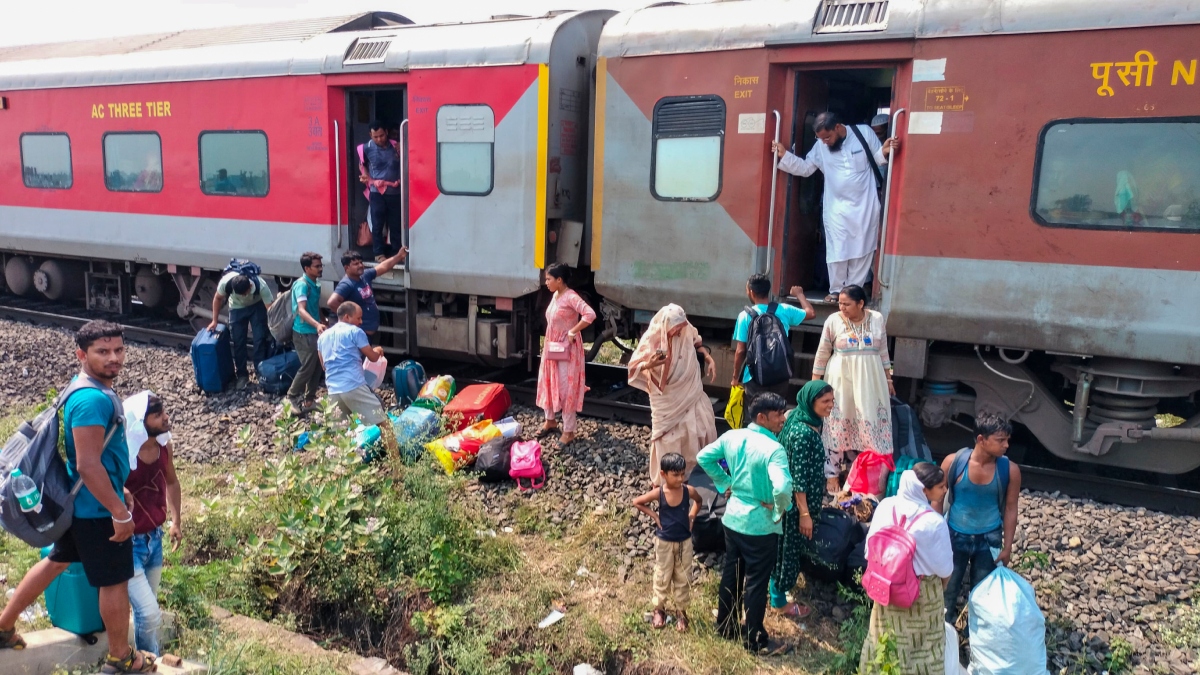 |
|
The derailment of the SMVT Bengaluru-Kamakhya Express near Nirgundi in Odisha's Cuttack district is a stark reminder of the potential risks associated with railway travel, even with the advancements in safety technology and infrastructure. This incident, which occurred at 11:54 AM, not only disrupted train services but also left seven passengers injured and many more stranded, highlighting the immediate and far-reaching consequences of such events. The swift response by railway authorities, local emergency services, and the National Disaster Response Force (NDRF) demonstrates a coordinated effort to mitigate the impact and ensure the safety and well-being of those affected. However, the incident also raises important questions about railway safety standards, maintenance protocols, and emergency preparedness. The prompt arrangement of a special train to transport stranded passengers to Kamakhya is a commendable step, showcasing the railway's commitment to minimizing inconvenience and facilitating the continuation of journeys. The diversion of other trains, including the Dhauli Express, Neelachal Express, and Purulia Express, further illustrates the logistical challenges and complexities involved in managing train services in the aftermath of a derailment. The establishment of helpline numbers across various locations, including Bhubaneswar, Cuttack, Khurda Road, Bhadrak, and Jajpur Keonjhar Road, is crucial for providing accurate information and support to passengers and their families during this stressful time. The concern expressed by Assam’s Chief Minister Himanta Biswa Sarma underscores the importance of inter-state coordination in addressing such incidents and ensuring that all affected individuals receive the necessary assistance. The East Coast Railway's focus on expediting repairs and restoring regular train services is paramount, but it is equally important to conduct a thorough investigation into the cause of the derailment to prevent similar incidents from occurring in the future. This investigation should consider factors such as track conditions, rolling stock maintenance, signaling systems, and any other potential contributing factors. The provision of snacks and drinking water to passengers affected by the derailment is a basic but essential gesture of care, demonstrating empathy and concern for their comfort and well-being. The overall response to the Kamakhya Express derailment reflects a multi-faceted approach, encompassing rescue operations, transportation arrangements, communication efforts, and restoration work. However, it is crucial to continuously evaluate and improve railway safety protocols and emergency response procedures to minimize the risk of future incidents and ensure the safety and security of passengers.
The economic impact of train derailments, while often overlooked in the immediate aftermath, can be significant. Delays and cancellations of train services disrupt the flow of goods and passengers, affecting businesses and individuals alike. The cost of repairing damaged infrastructure, including tracks, signaling systems, and rolling stock, can be substantial. Furthermore, there may be costs associated with compensating injured passengers and providing alternative transportation arrangements. The investigation into the cause of the derailment can also be a costly undertaking, requiring the expertise of engineers, investigators, and other specialists. Beyond the direct economic costs, there are also indirect costs to consider, such as the loss of productivity due to travel delays and the potential damage to the reputation of the railway system. In the long term, repeated incidents of derailment can erode public confidence in the safety and reliability of train travel, leading to a decline in ridership and revenue. Therefore, investing in railway safety improvements is not only a moral imperative but also an economically sound decision. This includes upgrading track infrastructure, implementing advanced signaling systems, enhancing rolling stock maintenance programs, and providing comprehensive training to railway personnel. The use of technology, such as predictive maintenance systems and automated track inspection equipment, can also play a crucial role in preventing derailments. Moreover, fostering a culture of safety within the railway organization, where employees are encouraged to report potential hazards and are held accountable for adhering to safety protocols, is essential. The regulatory oversight of railway safety is also critical, with independent agencies responsible for setting standards, conducting inspections, and enforcing compliance. International collaboration and knowledge sharing can also contribute to improving railway safety practices worldwide. The Kamakhya Express derailment serves as a reminder that railway safety is an ongoing challenge that requires continuous vigilance, investment, and innovation.
Examining the broader context of railway safety in India reveals a complex interplay of factors, including aging infrastructure, increasing traffic density, and budgetary constraints. While significant progress has been made in recent years to modernize the railway system and improve safety standards, challenges remain. The vastness of the Indian railway network, which spans thousands of kilometers and connects diverse regions, poses unique logistical and operational challenges. The high volume of passenger traffic, particularly on popular routes, puts immense strain on the system and increases the risk of accidents. The maintenance of aging infrastructure, including tracks, bridges, and signaling systems, is a constant challenge, requiring significant resources and careful planning. The allocation of sufficient funding for railway safety improvements is essential, but it often competes with other priorities, such as expanding the railway network and providing affordable fares. The integration of advanced technologies, such as automatic train protection (ATP) systems and real-time monitoring equipment, is crucial for enhancing safety, but it requires significant investment and expertise. The training and development of railway personnel, including drivers, maintenance workers, and signal operators, is also critical for ensuring safety. Furthermore, addressing issues such as trespassing on railway tracks and unauthorized crossings is essential for preventing accidents. The involvement of local communities in railway safety initiatives can also be beneficial. The Kamakhya Express derailment underscores the need for a comprehensive and sustained approach to railway safety in India, encompassing infrastructure upgrades, technological advancements, personnel training, regulatory oversight, and community engagement. By addressing these challenges and prioritizing safety, India can ensure that its railway system remains a safe and reliable mode of transportation for millions of passengers.
Source: Kamakhya Express derailment: Special train to transport stranded passengers via Cuttack
